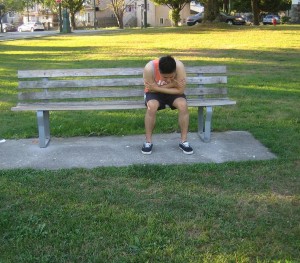Always bear in mind that the skin is prone to freezing if it is left exposed during extremely cold temperatures and can freeze temporarily if left out for an extended period. Frost burn is commonly known as frostbite in which the skin becomes numb, hard and often turns into grayish-yellow, pale or reddish in color. The stages of frost burn include frostnip, superficial frostbite and severe frostbite. The first stages of the condition can be treated with first aid measures while severe cases require immediate emergency care to prevent lasting tissue damage.
First aid care for frost burn

The following measures must be performed in order to provide relief as well as prevent further damage to the affected body parts.
- Remove the wet clothing. Take note that wet, cold clothing will only worsen the frost burn as it touches the skin and can drastically lower the body temperature.
- Prepare a bath filled with warm water and assist the individual into the tub and allow him/her to sit for 20-30 minutes. Do not use hot water as the elevated heat level can cause burns as well as blisters. Make sure that the temperature of the water is maintained between 104 – 107 degrees Fahrenheit to provide warmth to the body and restore the sensation to the affected body parts.
- Apply aloe vera gel on the affected area since it provides relief while at the same time minimizing the irritation that usually occurs once the responsiveness returns to the frozen areas.
- Provide over-the-counter medications for inflammation and pain such as ibuprofen. Take note that the pain and inflammation during mild cases can linger while the body is warming up.
- Cover the individual with a blanket. It is best to use a heavy blanket so that the body heat could not escape as well as help warm up the affected body parts. Do not use direct sources of heat since the individual could not feet the intensity of the heat due to the numbness, especially stoves and heating pads that can cause damage to the skin.
When an individual suffers frostbite while in the wilderness, it is important to encourage the individual to move in order to prevent the fast progression of the condition. As much as possible, the individual must not fall asleep since the risk for frostbite drastically increases.
Spending time outdoors under extremely cold temperature will put anyone at risk for frost burn. With this in mind, it is important to wear appropriate clothing and gear if it is a must to go out. Make sure that you are alert for the initial signs of the early stages of frost burn and immediately provide the appropriate measures to prevent the condition from worsening. If treatment is delayed, the condition can progress to the severe stage and can cause permanent damage.
